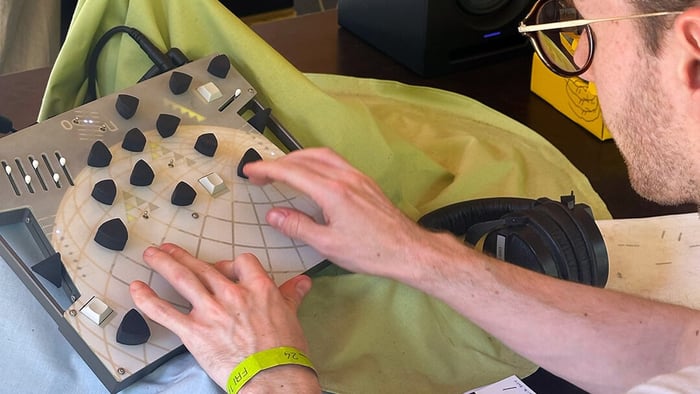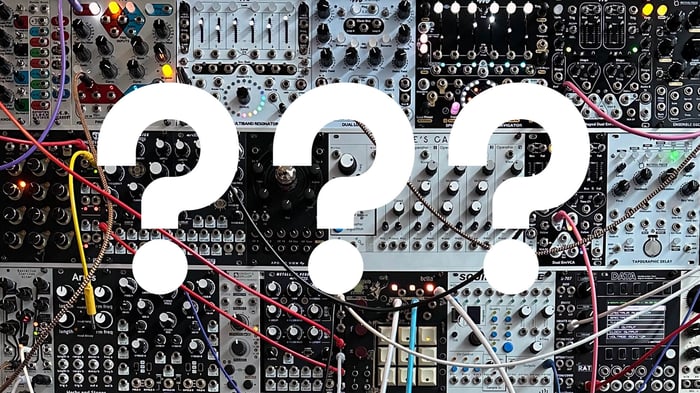
How to get started with modular synths
There are few journeys in the music-making world that are as hard to navigate as modular synths. The ultimate flexibility to design your own musical system comes with the caveat of seemingly endless options. How do you know which way to go when you may not even be certain of the destination?
People who want to start building a Eurorack system often face this dilemma: they feel the appeal and understand that the flexibility of modular would benefit them creatively, but they perhaps aren’t sure yet what specific jobs they want their system to do.
Working at Signal Sounds, customers frequently ask me ‘where should I start?’ - and believe me, I wish I had a single answer that worked for everyone. In fact, the answer really lies in a series of other questions that you need to ask yourself. The best way to figure out how to take your first steps is to know the general direction you want to head in.
1. What kind of music do you want to make?
In much the same way that there is huge choice in what a modular system can do, there are big choices to make about what type of music you want to make. A system designed to make pounding techno will likely constitute a different set of modules than one designed to make luscious ambient soundscapes.
I’ve often found that people answer this question with multiple genres or blending of genres - and of course that’s fine. One of the best things about modular is that there’s often a lot of flexibility in modules. A kick drum module designed to spit out pounding rhythms can often double up as a lovely weighty but soft bass tone with some careful tweaking of the settings.
You’ll often have more flexibility than you think, even if you were to try to build a case in a particular way. But having one or two genres in mind when you’re planning things is usually helpful to keep the pool of choices smaller to start with.
2. How do you want to make it?
Workflow is a really big factor to consider. What works perfectly for me may be someone else’s nightmare and vice versa. There are many ways to incorporate modular into your workflow and it’s important to think about what you currently use and how you like to make music.
Are you someone who hates screens and loves hardware? Are you someone who mainly works in a DAW and likes adding in hardware pieces for inspiration? The answers to these will narrow down further what avenues and routes you wish to go down in modular.
For example, when I’m writing pop/dance/hip hop styles, a computer-based DAW is my preferred way of building an arrangement. I use modular and other hardware as sound sources or ‘inspiration boxes’ - making interesting loops for me to use as jumping-off points for song ideas.
When I make ambient music, however, I find the rigid timeline of a DAW too restrictive, so I opt for an entirely hardware approach. The nice thing about this for me is that often the modules I reach for to make ambient compositions are the same ones I’d use to make interesting loops for song-starters.
These are of course just a couple of examples of approaches to take; there are many others. But consider how you work and what pain points you currently have in your workflow, and think about what type of jobs a modular could do to alleviate those pain points. And remember that making music should always be a fun endeavour.
3. What other gear do you have?
Modular doesn’t need to exist in isolation, and when you’re starting out it’s a good idea to have some familiar things at your disposal as you figure things out - whether that’s a DAW or standalone synths, sequencers, samplers or drum machines.
Expanding the sound or functionality of something you own means that as your system grows, you’ll be able to keep those other parts of your studio involved. Plus it keeps the initial outlay lower as you don’t need to do every part of the process in the modular world from the get-go.
Perhaps you want to make ambient compositions that incorporate some live looping and processing of instruments you already play and own, like guitar, strings or woodwind. Maybe you have a synth or two and you like jamming, but find DAWs a pain - in that case maybe a system for you could look like a rack focused on drums and sequencing to allow you to make music free from a computer and with greater flexibility than simply adding a drum machine. In my first modular case, I knew I wanted to make generative music, so I started by adding a Make Noise Rene sequencer to an 0-Coast I already had and built around it from there. This worked great for me.
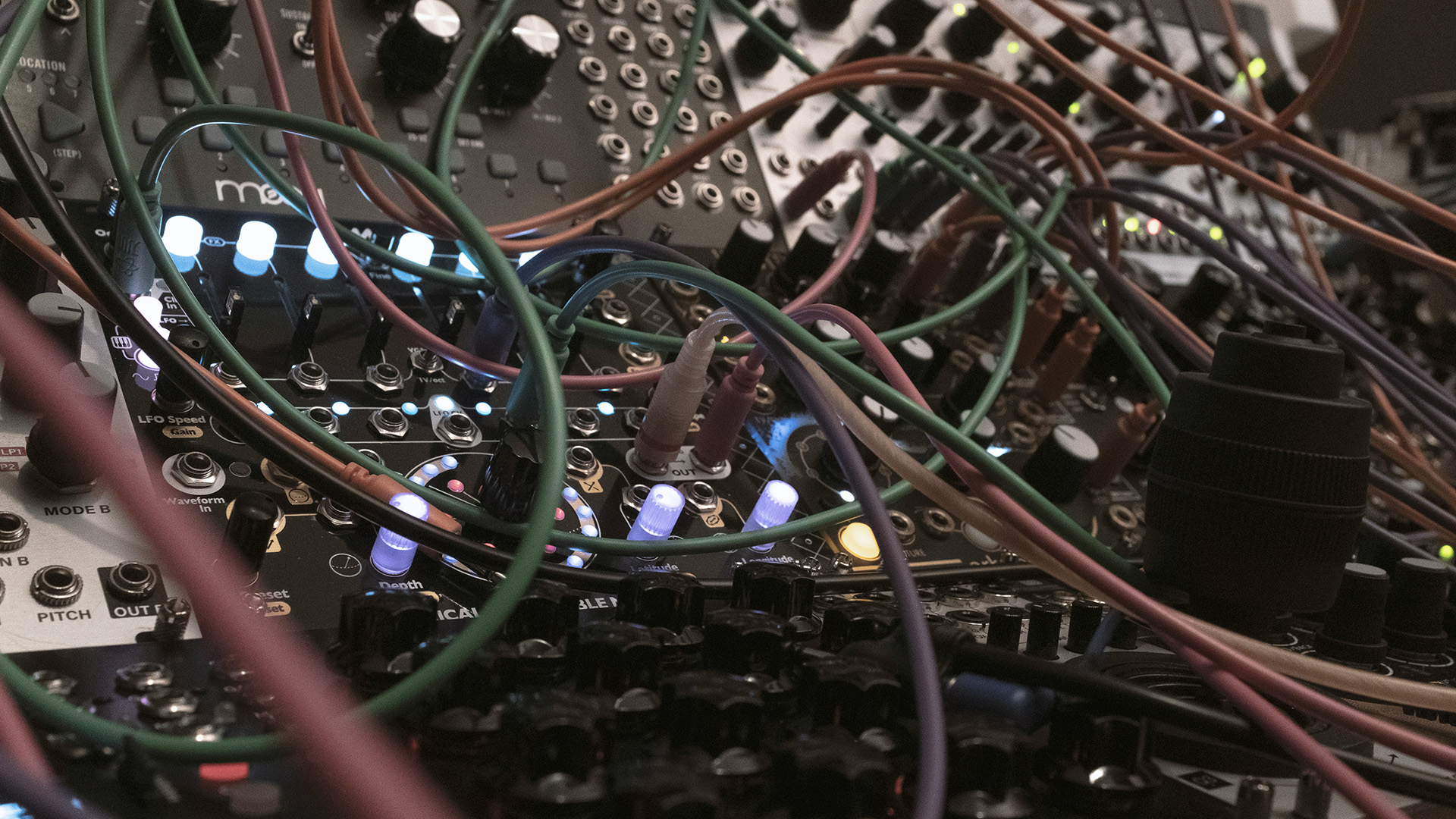
4. How much homework do you want to do?
Something that shouldn’t be underestimated with modular is the learning curve. It’s much less daunting to start learning two or three modules that complement something you already know how to use than it is to put 8-10 modules into a case and have to figure them out all at the same time.
Playing to your strengths is a wise idea. Some modules require a LOT of manual reading and deep diving. Others can be used straight out the box. Think about how much work you’re willing to put into learning and try to pick modules that suit that. Browsing the manual of a module you’re considering will usually give some indication about how easy it will be to use.
5. What skills do you have?
Another example of a strength to consider would be your musical proficiency, for want of a better term. Perhaps you have fully formed ideas in your head and want to be meticulous about exactly which notes happen when - or maybe you’d like the modular to generate some of that for you? Maybe you’re great at making drum patterns in Ableton but you aren’t very good with the piano roll or playing in notes yourself, so a step sequencer would help you get ideas out better?
Keeping your own skills in mind when designing a system will help you get the right modules and give you a greater chance you’ll end up with something that works best for you.
Further thoughts and tips
Start with a semi
If you have some reservations about where to start you can’t really go wrong with a semi-modular synth like the Make Noise 0-Coast, Moog Mother-32 or Cre8audio West Pest and East Beast. They provide a great starting point and also give you a taste of the experience of patching and the concepts of signal flow and control voltage. If traditional synth voices aren’t your thing, there’s also the semi-modular Strega by Make Noise that can be used as a sound shaping and noise-making device. In any case, buying a semi-modular first is definitely a safe option.
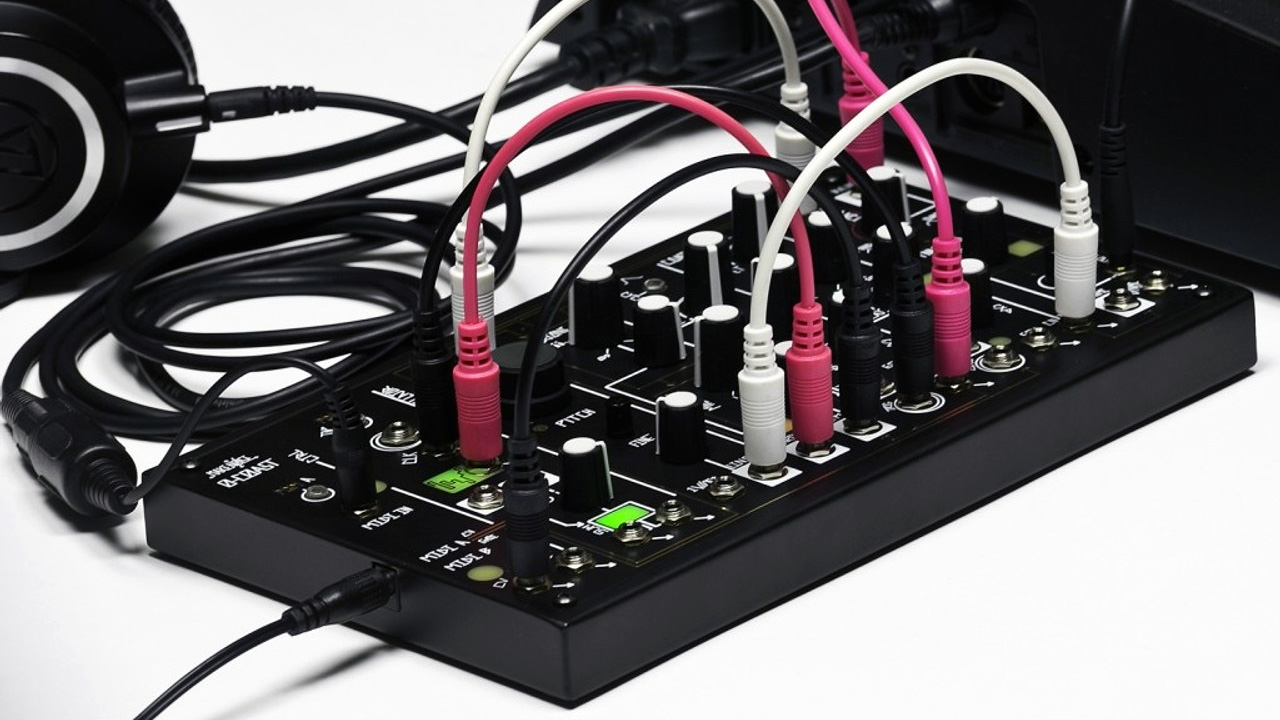
Have a centrepiece
Another way of approaching things would be having a ‘centrepiece’ module to act as the hub of your setup - either a sound source in its own right like a sampler, or something like a powerful sequencer that can form the basis of your future compositions and be used with equipment you already own. Having an exciting, inspiring module as a focal point means you can then accumulate things that complement it.
For example, I knew I wanted a sampler that I could send voltages to so I could randomise sample playback for the purposes of ambient composition. So I started with a case that just had a Make Noise Morphagene and Qu-Bit Chance in it. As I experimented it became easier to see what else I wanted and building the system up became easier.
Add a ‘jack-of-all-trades’ module
When you’re starting out, it’s quite common to come up against a brick wall when patching. You’re in the flow, your ear wants something to happen, you reach for a patch cable and realise you don’t have a module that does X or Y. One solution would be to have one or two modules on hand that offer heaps of functionality so you’ll always have that thing you’re reaching for.
A prime example of this is the Expert Sleepers Disting Mk4. This is a compact module that has (at the time of writing) 112 different algorithms to choose from. You need a quantiser to turn some random voltage into some scaled musical notes? It can do it. You need a delay? A reverb? A chorus? A granular pitch shifter? A multisample playback module? It can do all of those too.
Another great example is the ALM Busy Circuits Pamela’s Pro Workout; a simple to use but immensely powerful tool for generating clock, gates, LFOs, Euclidean patterns and scale-quantised voltages, all at once, and all linked to a central BPM-based clock. With eight outputs, you can derive a lot of control and musicality from this module alone. Not every case needs these two, but no case is made worse for having them!
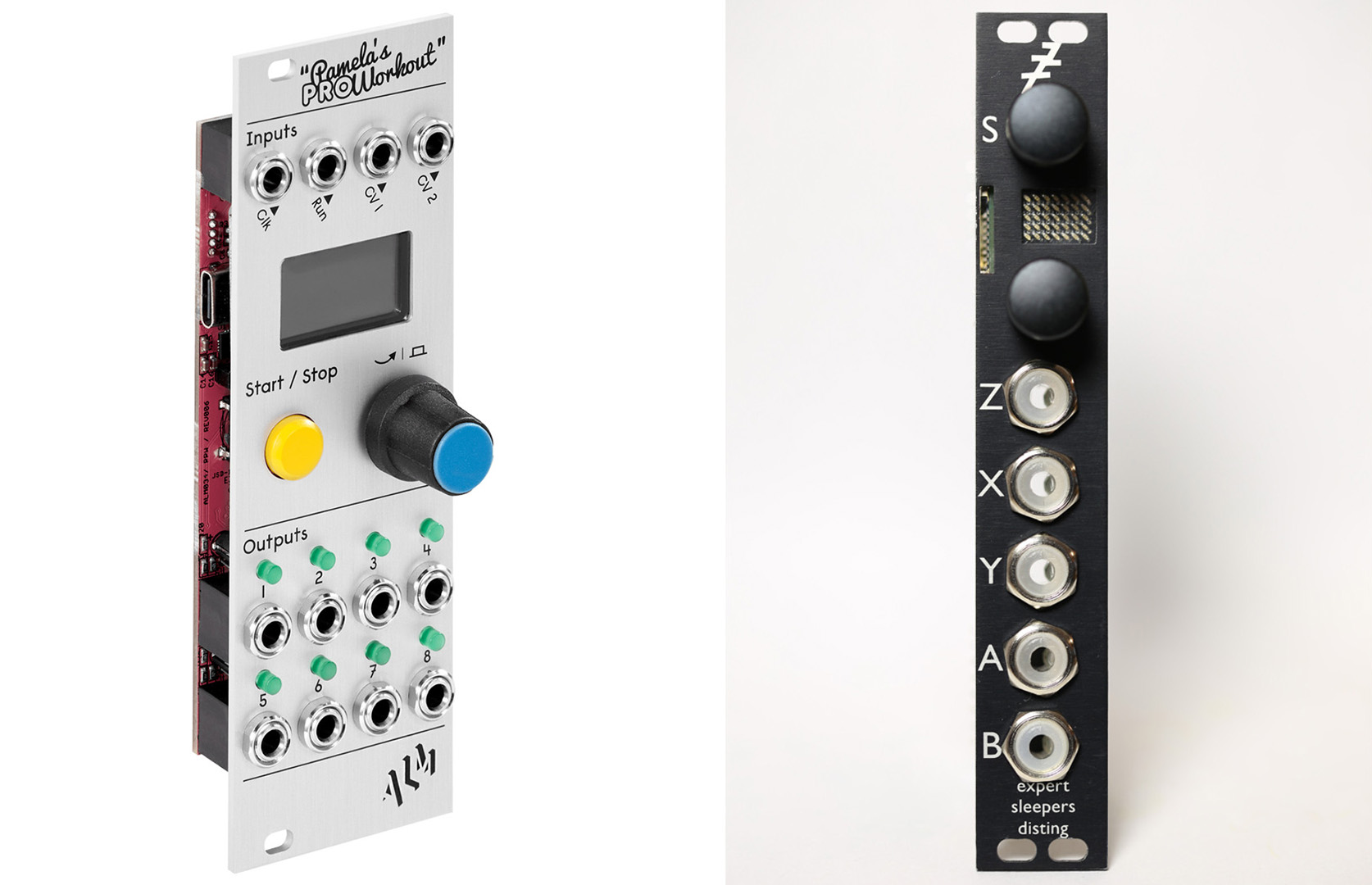
Embrace the mistakes
As you explore and build your system it is inevitable that you will get things that don’t quite work for you. That’s OK - it’s just part of the process. Eurorack modules hold their values pretty well on the second-hand market so even if you have something for a while and subsequently decide it’s not for you, you won’t end up hugely out of pocket.
Size matters
It’s important to think carefully about the size and type of case you might buy. The conventional wisdom is to get a case a bit bigger than you think you need so you have some wiggle room to grow. In general, this isn’t a bad idea - although sometimes smaller cases can force you into better workflows.
Another consideration would be whether you want to play live. Portability should factor into the equation if you plan to move about with your modular. Doepfer Monster cases are great for studio use but not much fun to cart about, I can assure you, whereas an Intellijel Performance case comes with a lid, carrying handle and optional gig bag.
The end of the beginning...
I can’t stress enough how individual an experience designing a modular system can and should be, and there’s no doubt that it rewards proper planning and careful consideration. I hope the above questions will serve as jumping off points for thought and research; that they help somewhat to narrow down the possibilities of where to start.
While the first step is the most daunting, once you’ve begun the journey you will no doubt find yourself along the way. And we are, of course, also here to provide advice and answer any questions that will arise.
If you feel no closer to really knowing exactly what you really want from modular, just remember that the journey itself will inform the destination - that if you simply follow what really interests you, you will find the answers along the way. The cliche of it being “the journey not the destination” is, as with most cliches, true on a level much deeper than its surface appears.


